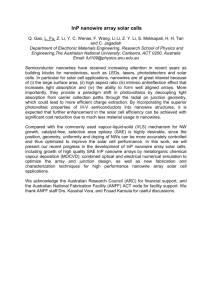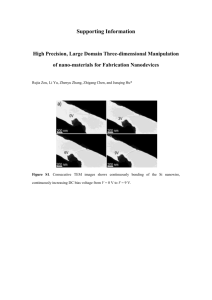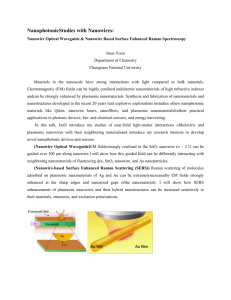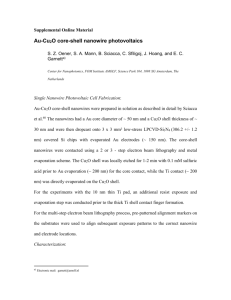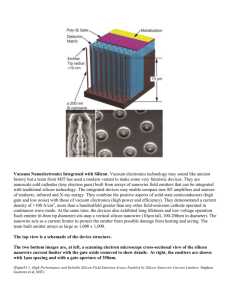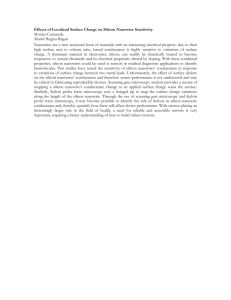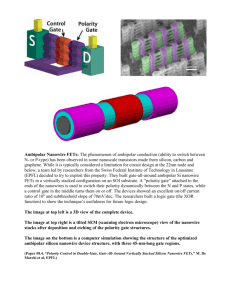Lithographically Patterned Nanowire Electrodeposition
advertisement
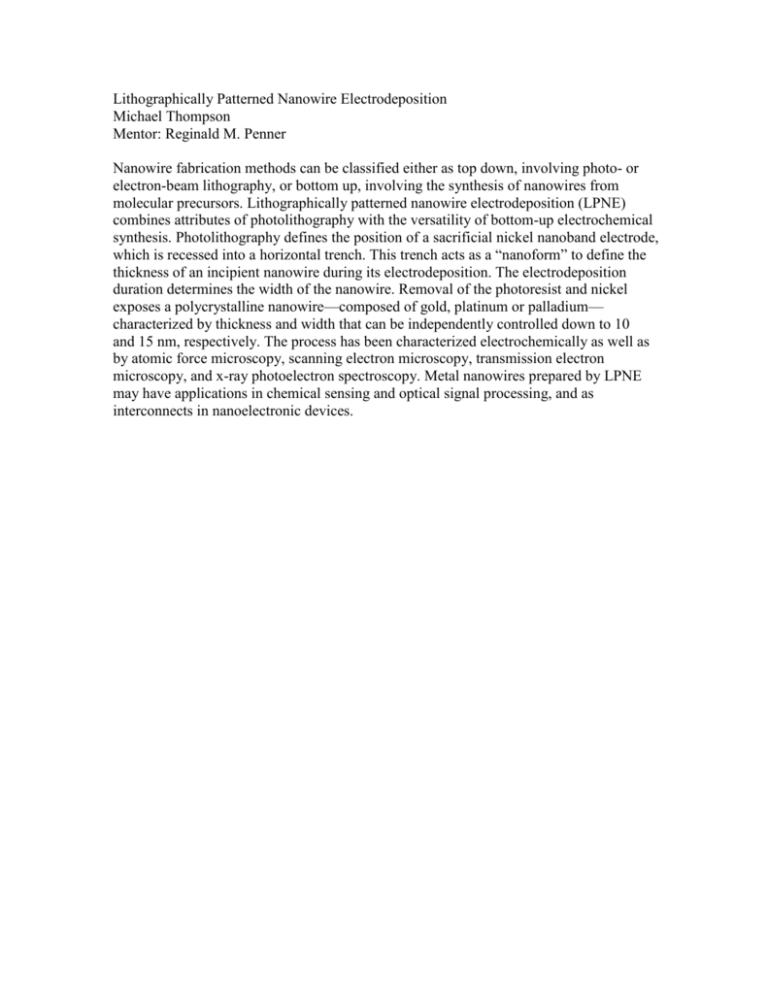
Lithographically Patterned Nanowire Electrodeposition Michael Thompson Mentor: Reginald M. Penner Nanowire fabrication methods can be classified either as top down, involving photo- or electron-beam lithography, or bottom up, involving the synthesis of nanowires from molecular precursors. Lithographically patterned nanowire electrodeposition (LPNE) combines attributes of photolithography with the versatility of bottom-up electrochemical synthesis. Photolithography defines the position of a sacrificial nickel nanoband electrode, which is recessed into a horizontal trench. This trench acts as a “nanoform” to define the thickness of an incipient nanowire during its electrodeposition. The electrodeposition duration determines the width of the nanowire. Removal of the photoresist and nickel exposes a polycrystalline nanowire—composed of gold, platinum or palladium— characterized by thickness and width that can be independently controlled down to 10 and 15 nm, respectively. The process has been characterized electrochemically as well as by atomic force microscopy, scanning electron microscopy, transmission electron microscopy, and x-ray photoelectron spectroscopy. Metal nanowires prepared by LPNE may have applications in chemical sensing and optical signal processing, and as interconnects in nanoelectronic devices.



